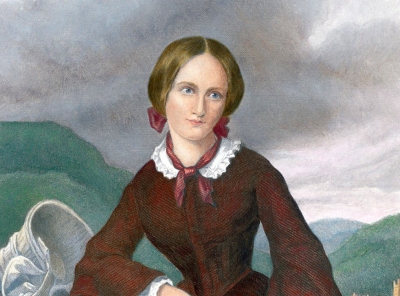
A famous poet once told Charlotte Bronte that “literature cannot be the business of a woman’s life.” But Charlotte proved him wrong by penning “Jane Eyre” and becoming one of the earliest feminist voices in literature. Charlotte’s heroine, the feisty and strong-willed governess, was based partly on herself and her sisters, Emily and Anne, and their extraordinary lives. Read on to know more about Charlotte’s genius, imagination and literary prowess…
Early life
Born on April 21, 1816, Charlotte was the eldest among the Bronte sisters. Along with their brother Branwell, they lived in Haworth, West Yorkshire in England. At an early age, Charlotte had to grapple with the loss of her mother and two older sisters, who died of tuberculosis.
School too was a nightmare for Charlotte. The Clergy Daughters’ School at Cowan Bridge had a harsh environment, and Charlotte had several bad experiences there. It served as an inspiration for the dark and cold Lowood Institution in “Jane Eyre”.
Currer, Ellis and Acton Bell
Charlotte and her siblings penned several novels and poems using male pen names Currer, Ellis and Acton Bell. Currer Bell was Charlotte, Emily was Ellis and Anne was Acton. Charlotte even used this pseudonym while writing her most successful novel “Jane Eyre”. She did not want to reveal her identity as she feared that the readers will not take a female author seriously. Even her publishers found out about her true identity later. “Jane Eyre” received rave reviews and readers began to speculate about who Currer Bell was. *Charlotte famously responded to her critics, “To you I am neither Man nor Woman – I come before you as an Author only – the sole ground on which I accept your judgement.” (*Source: “Charlotte Bronte: A Fiery Heart by Claire Harman.)
Tiny books
Growing up, Charlotte and her siblings entertained themselves by creating miniature magazines. The magazines included original short stories, essays, poems, and letters written by the siblings as well as fictional advertisements and editorials. The second issue of one such book, called “The Young Men’s Magazine”, was bought by the Bronte Society for a sum of £600,000 last year. The tiny book has since been put on display at the Parsonage Museum in the Brontes old home in Haworth.
DID YOU KNOW?
- Charlotte’s first novel “The Professor” was rejected nine times before it was finally published posthumously.
- A famous poet told Charlotte that “literature cannot be the business of a woman’s life.”
- Her siblings didn’t live long enough to see her succeed. All three of them succumbed to tuberculosis between 1848 and 1849.
- A golden ring containing a lock of Charlotte’s hair was discovered in an attic in north Wales in April, 2019. The authors name has been inscribed on the inside.
Picture Credit : Google




